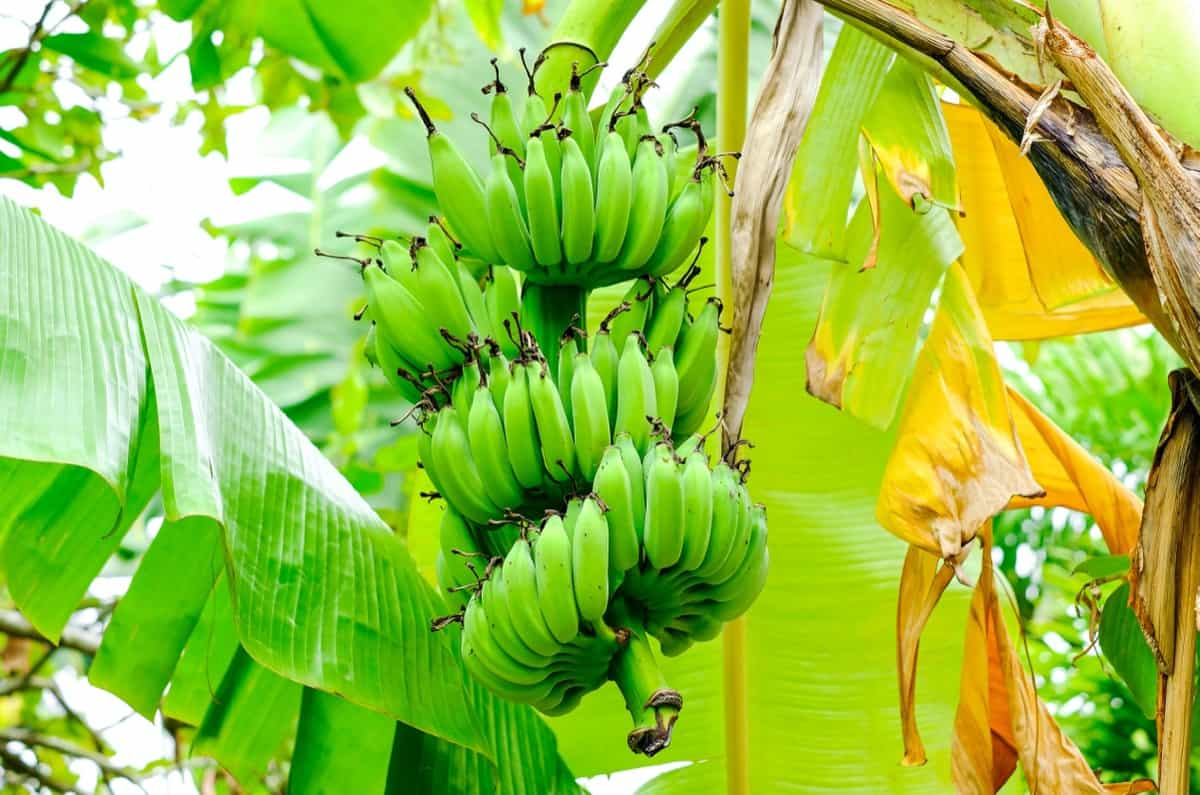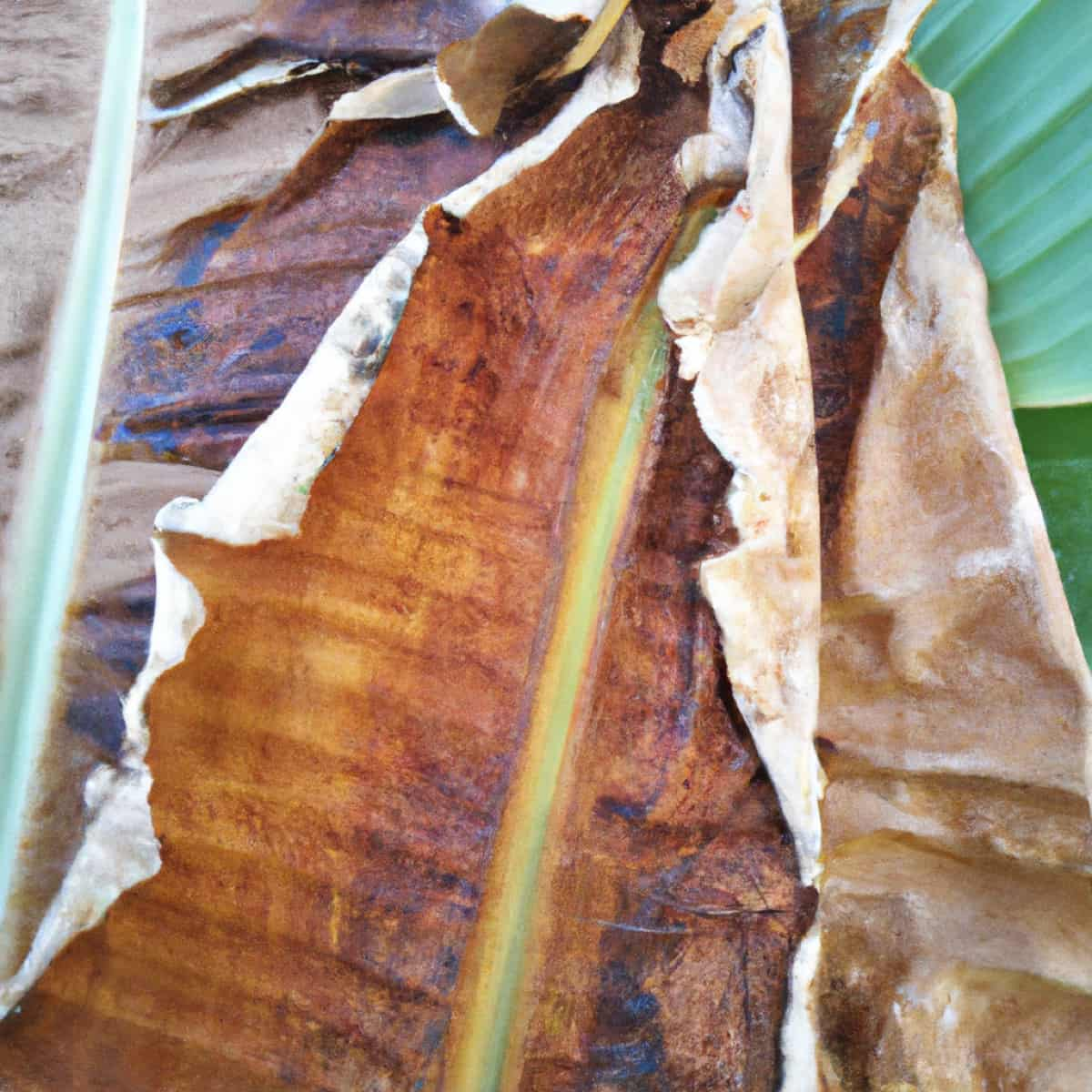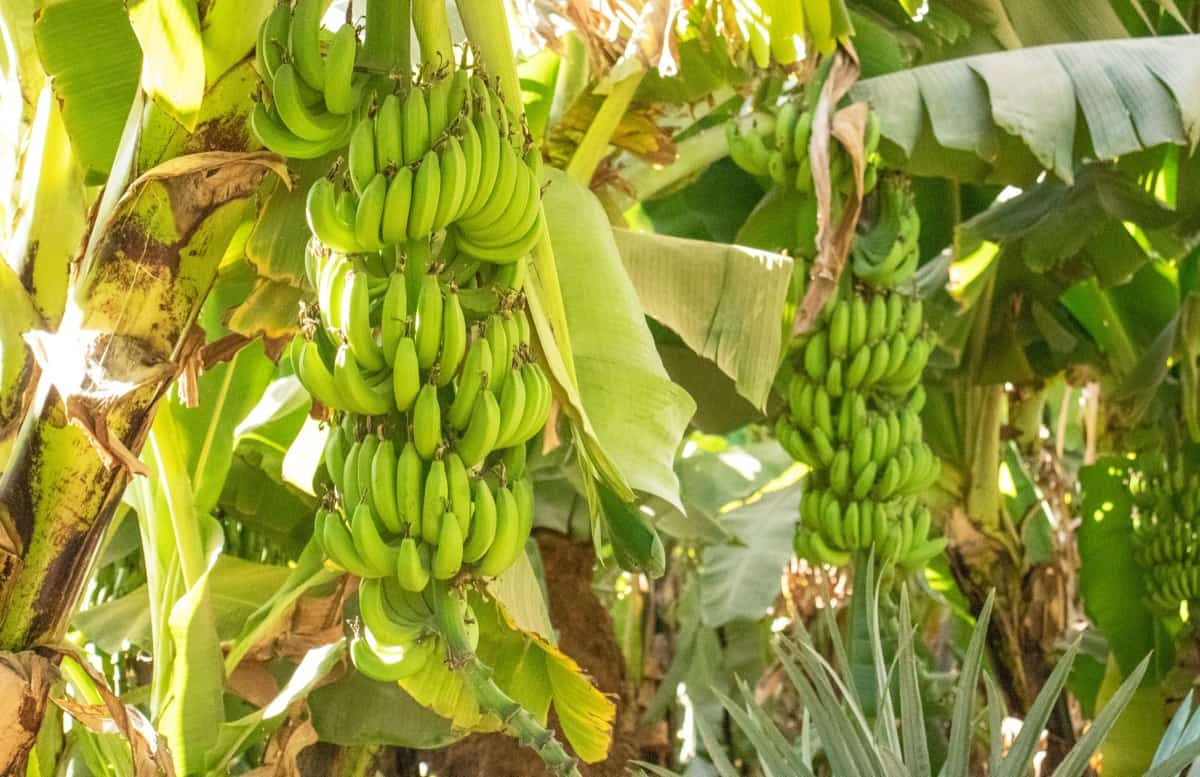The Banana Panama Wilt Disease is caused by the fungus Fusarium oxysporum f.sp. cubense is a devastating disease that affects banana crops worldwide. It is also known as the Fusarium Wilt of Banana. The economic impact of Banana Panama Wilt Disease is significant, as it reduces fruit yield, quality, and marketability and can result in the complete loss of yield.

It is considered one of the most destructive diseases of bananas and has been responsible for significant crop losses in many countries. The disease can spread through infected plant material, tools, and machinery and persist in the soil for many years. Efforts to control the disease have been challenging due to the lack of effective fungicides and the persistence of the fungus in the soil.
Crop rotation and soil sterilization have been used as management strategies but have not proven entirely effective. To effectively manage this disease, it is important to understand its disease cycle, the mode of disease spread, and the best methods for controlling it. This article will provide an overview and discussion of the Banana Panama Wilt Disease in Banana crops, including its symptoms, identification techniques, and control.
Banana Panama Wilt Disease Management
The Causal Organism of Banana Panama Wilt Disease
- Fusarium oxysporum is a soil-borne fungus that belongs to the Family Nectriaceae of Order Hypocreales of the Phylum Ascomycota.
- The mycelium is transparent, branched, and septate.
- The fungus produces chlamydospores, micro-conidia, and macro-conidia.
- Micro-conidia – These are unicellular, transparent, elliptical, or oval-shaped.
- Macro-conidia – These are sickle-shaped, have 3-5 septa, and are pointed at both ends.
- Chlamydospores – These are spherical, pale yellow, and have rigid walls.
The Disease Cycle of Banana Panama Wilt Disease
The disease cycle of the Banana Panama Wilt Disease, Fusarium oxysporum, in Banana Crops, begins with the infection of the banana plants when the spores in the soil come into contact with the roots of the banana plant. The fungus penetrates the roots, enters mechanical wounds by burrowing nematodes, and moves into the plant’s vascular system.
Once inside the banana plant, spores colonize the vascular system, producing mycelium and spores that clog the water and nutrient transport pathways. As a result, the plant cannot take up water and nutrients from the soil, which leads to wilting and, eventually, death. The fungus can also produce toxins that further damage the plant.
The disease spreads when the fungus spreads from infected plants to healthy ones. This can happen through the movement of soil, contaminated planting material, or infected water. The fungus can live in the soil for so many years, even without a host plant, making it difficult to control the disease. Once the disease is established in a banana plantation, eradicating it can be difficult. This disease spreads primarily through infested rhizomes; the secondary spread is through irrigation water.
Occurrence of Banana Panama Wilt Disease in Banana Crop
- Location of Banana Panama Wilt disease: This disease occurs in Banana crops in India, Africa, Bangladesh, Sri Lanka, Vietnam, Thailand, Indonesia, Malaysia, the Philippines, the United States, Mexico, Brazil, Colombia, Ecuador, and Australia.
- Host range: The most common crops affected by Fusarium oxysporum are Banana, Plantains, Heliconia, Ginger, Turmeric, and Tomato.
Favorable Conditions for Banana Panama Wilt Disease Spread in the Field
- Warm soil temperature, light soils, and high soil moisture are conducive to the spread of the disease.
- Fusarium wilt thrives in warm temperatures, with optimal growth between 28-30°C. Temperatures above 35°C can also be favorable for the disease. Therefore, banana-growing regions with hot climates are at higher disease risk.
- Excess moisture in the soil due to over-irrigation, poor soil drainage, and waterlogging provides the perfect environment for the growth and spread of the fungus, especially in poorly drained soils.
- Fusarium wilt prefers acidic soil with a pH of 5.0 to 6.5. The disease can be severe in soils that are too acidic or alkaline.
- Monocropping and repeatedly planting the crop in the same field can negatively affect crop yields.
- The presence of burrowing nematodes in the field can aid in the infection of the F. oxysporum pathogen.
Damage Symptoms of Banana Panama Wilt Disease
- The leaves turning pale yellow with reddish brown streaks at the leaf margins and the splitting of the pseudostem are the characteristic features of the disease.
- Continuous lines of discoloration of vascular bundles are seen when the plant is cut longitudinally, and a circular pattern is observed on the rhizome.
- The leaves turn light yellow with reddish streaks on the margins; splitting the pseudostem is the characteristic symptom.
- The pathogen infects the vascular root system of the plant and disrupts water uptake, eventually causing the plant leaves to turn yellow, wilt, and die.
- It clogs the water and nutrient transport pathways, causing girdling effects in plants.
Percentage of Yield Loss Due to Banana Panama Wilt Disease in Banana Crop
- The disease can cause 20% yield losses in the United States. In Mexico, yield losses are 10-50%. In India, the yield losses are 20-30%. In Bangladesh, the losses are 50%. In Sri Lanka, the losses are 50%. In China, a 20% yield loss is seen. In Africa, yield losses are up to 100%.
- In Indonesia, it is 80%. In Vietnam, it is 30%. In Ecuador, it is 70%. In the Philippines, it is 80%. In Malaysia, it is 10-50%. In Colombia, it is 50%. In Thailand, it is 10-50%. In Brazil, it is 70%. In Australia, the losses are 10-20%. The Economic Threshold Level is determined at 10-20% disease incidence.
In case you missed it: Banana Scab Moth Pest Management: Symptoms, Treatment, Chemical, Biological, and Organic Control

Cultural Control Measures of Banana Panama Wilt Disease
- Rotating the crop with other non-host plants until at least 3-4 years, such as paddy, in wetland cultivation.
- Ensure proper drainage facilities in the soil and apply heavy amounts of organic manure.
- The field should be kept clean by removing all infected plants, applying lime, and leaving it for one crop season.
- Disinfect tools and equipment and avoid soil movement from infested to disease-free fields.
- Proper soil management practices such as maintaining proper soil moisture levels, avoiding soil compaction, and improving soil fertility can help reduce the severity of the disease in the crops.
Biological Control Measures of Banana Panama Wilt Disease
- Trichoderma spp. are beneficial fungi that colonize the root system and induce plant resistance against the pathogen, promoting plant growth.
- Bacillus spp. are beneficial bacteria that produce antibiotic compounds that can inhibit the growth of the pathogen.
- Pseudomonas produces secondary metabolites that can inhibit the growth of the pathogen.
- Mycorrhizal fungi form a symbiotic link with the roots of higher trees and help in nutrient uptake.
Chemical Control Measures of Banana Panama Wilt Disease
- Spray Mancozeb, Thiophanate-methyl, Carbendazim, Benomyl, Azoxystrobin, Trifloxystrobin, Tebuconazole, or Propiconazole to the foliage to control the fungus spread.
- Treatment – Treat the suckers with Carbendazim before planting and practice soil drenching later.
- Soil drenching – Apply Carbendazim around the pseudostem at 60 days intervals from the fifth month after planting.
- Corm injection – Inject Carbendazim into the corm on the 5th and 7th months after planting.
- Granules – Fill the pits with Carbofuran or Carbendazim granules for the corms.
Organic Control Measures of Banana Panama Wilt Disease
- Plant extracts, such as extracts from neem, ginger, garlic, and turmeric leaves, are used as a foliar spray or incorporated into the soil to suppress the disease.
- Spray Copper-based fungicides, such as copper oxychloride and copper hydroxide. They interfere with the fungal cell enzyme systems, leading to fungal death.
- Chitosan inhibits the germination of fungal spores and disrupts fungal cell membranes.
- Apply Farmyard manure and Neem cake to manage the disease.
- Tea tree oil, thyme oil, oregano oil, clove oil, and cinnamon oil disrupt the pathogen’s cell membrane, causing it to die.
Preventive Measures for Control of Banana Panama Wilt Disease
- Use disease-free, healthy, and certified planting material only.
- Always use sterilized and disinfected pruning equipment to prevent the spread of the disease to new trees.
- Avoiding soil compaction through appropriate tillage practices can help reduce the risk of Fusarium wilt in banana crops.
- Proper irrigation management, such as drip irrigation and avoiding waterlogging, can help reduce the risk of Fusarium wilt in banana crops.
- Soil solarization involves covering the soil with a clear plastic sheet and allowing the sun to heat the soil to temperatures lethal to the pathogen.
- Regularly monitoring the crops for signs of disease will help to find and manage the disease early before it spreads.
In case you missed it: Banana Spiralling Whitefly Pest Management: Symptoms, Treatment, Chemical, Biological, and Organic Control

Conclusion
The Banana Panama Wilt Disease caused by Fusarium oxysporum is a significant threat to Banana production and causes significant economic losses. Managing Fusarium wilt in banana crops requires a multi-pronged approach, including cultural, biological, chemical, and preventive control measures. By combining different control measures, farmers can effectively control the spread of the disease, ensuring the sustainability of banana production.
- Beneficial Insects in Pest Management
- Natural Solutions for Pest Control in Flower Gardens
- Types of Fungicides Used in Agriculture
- Common Issues in the Fruit Development Stage of Pomegranate Farming
- Fruit Development Issues in Papaya: Easy Solutions and Treatment
- Soil-Borne Diseases and How to Protect Your Plants
- Practices to Prevent Disease Spread in the Garden
- From Wilted to Thriving: How to Treat Root Rot Naturally in Houseplants
- Natural Remedies to Cure Brown Spots on Fig Tree Leaves